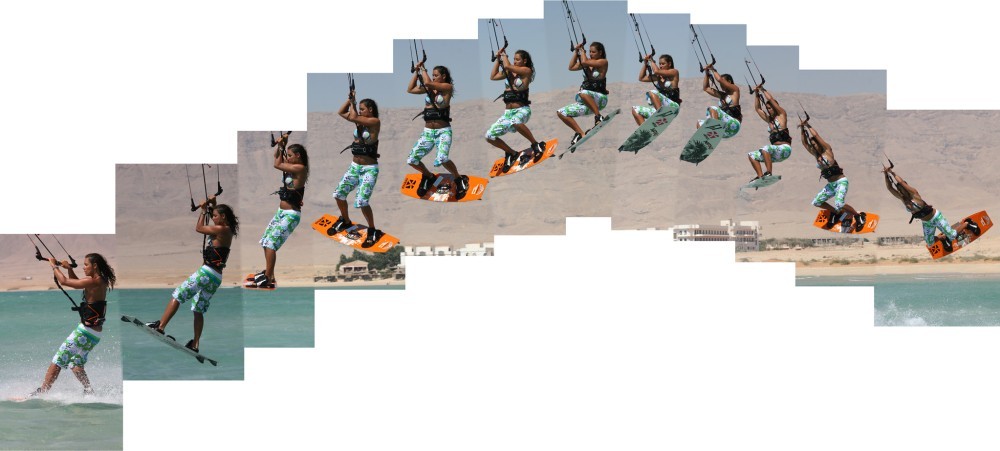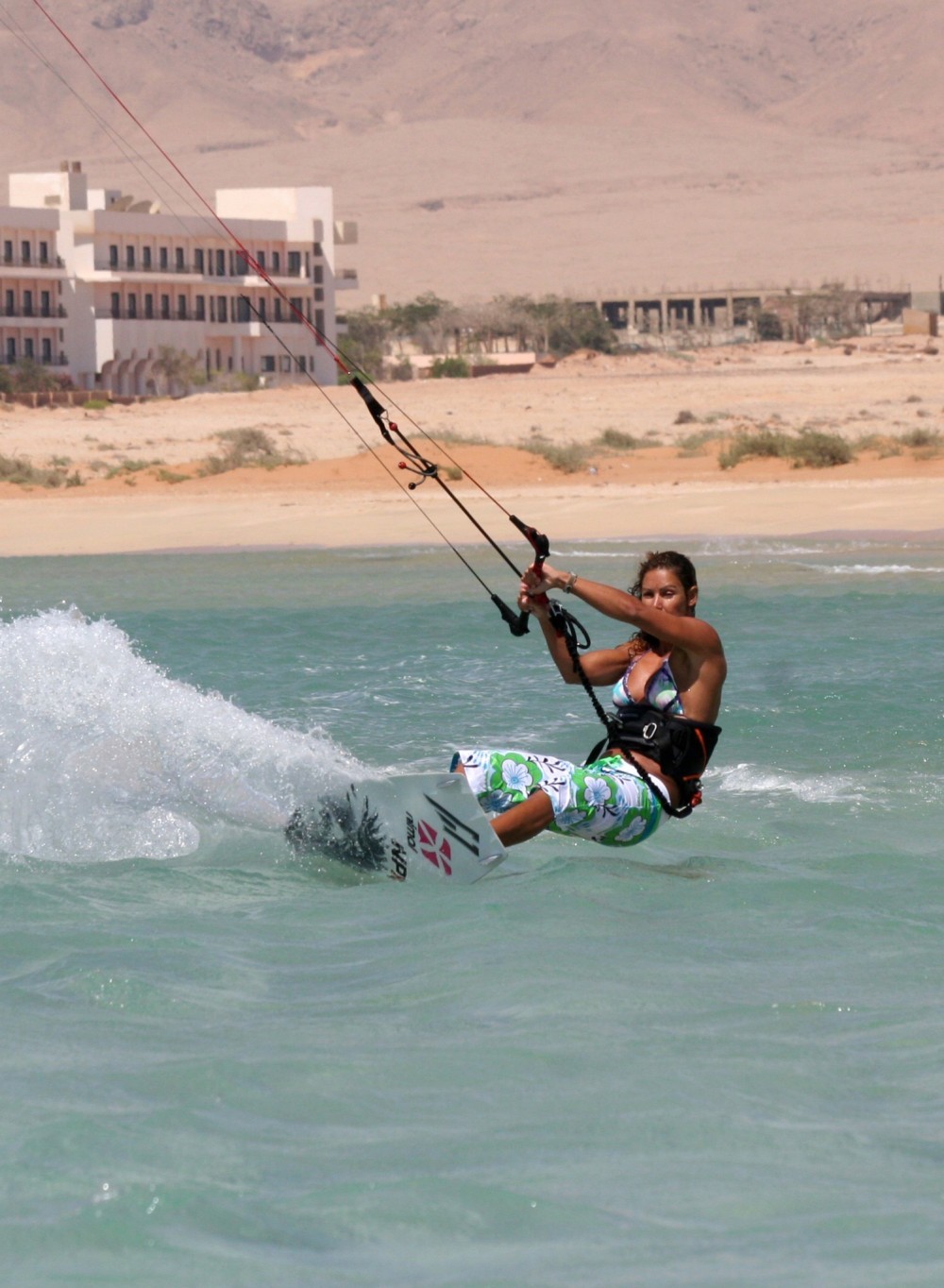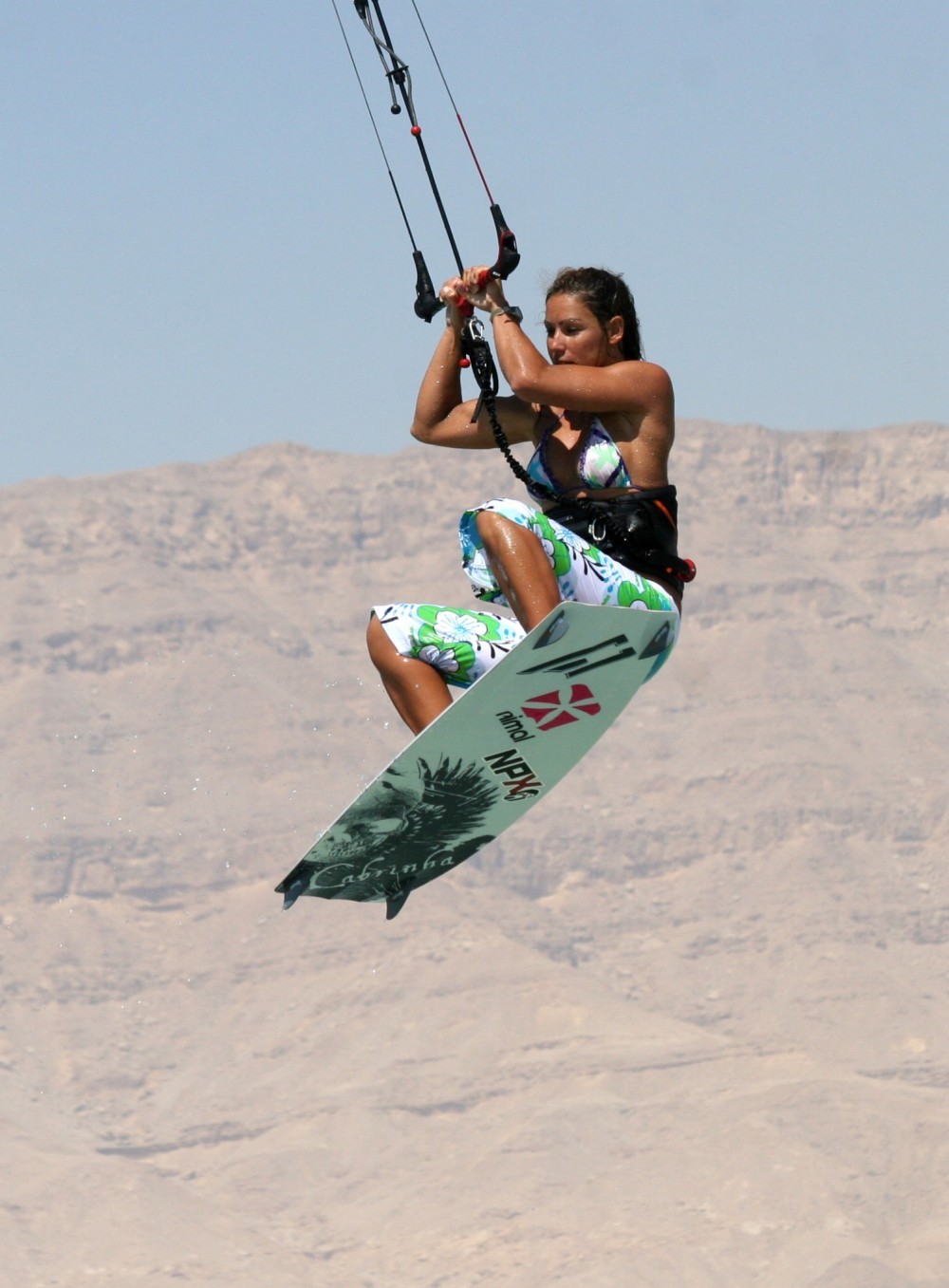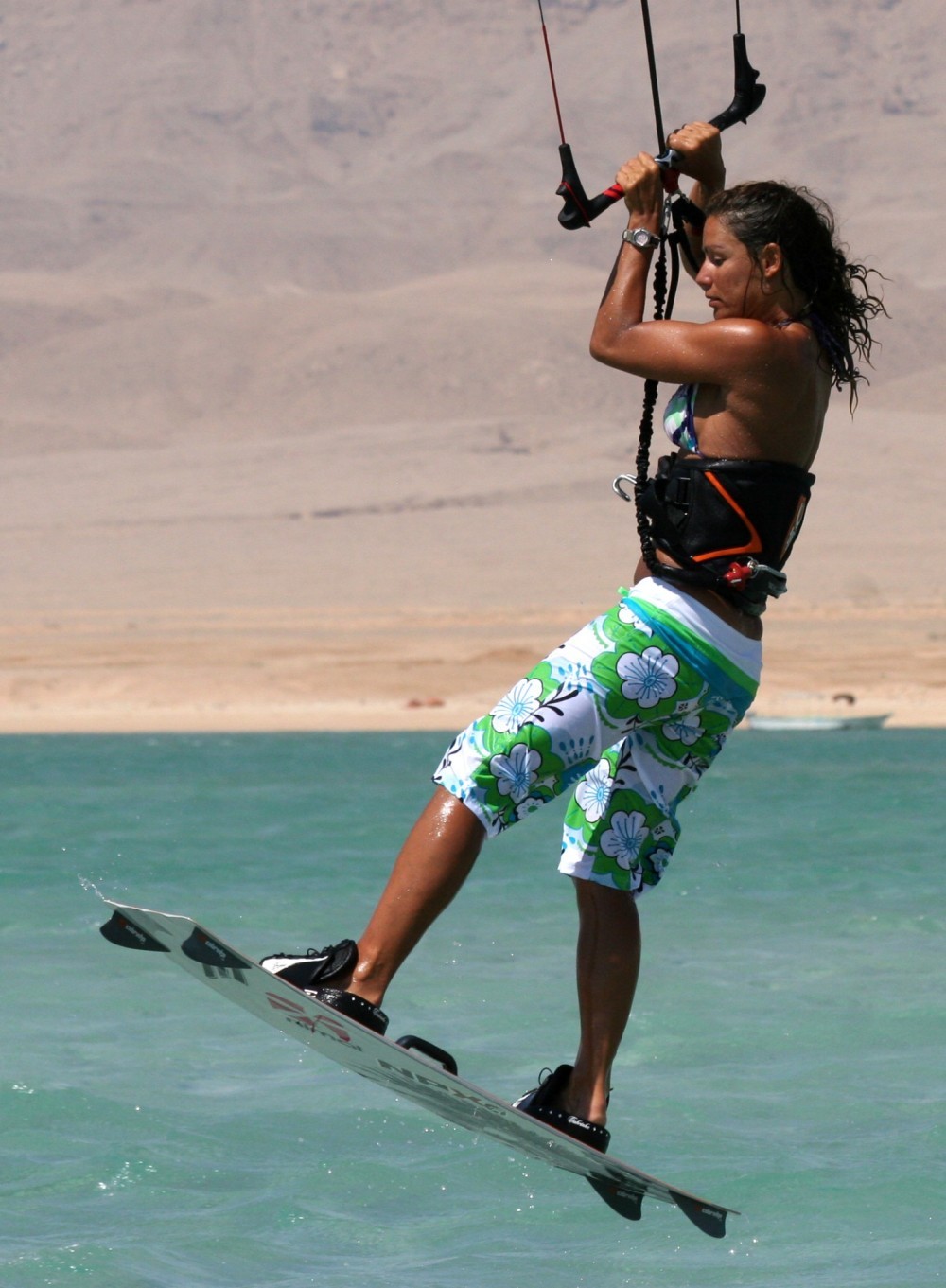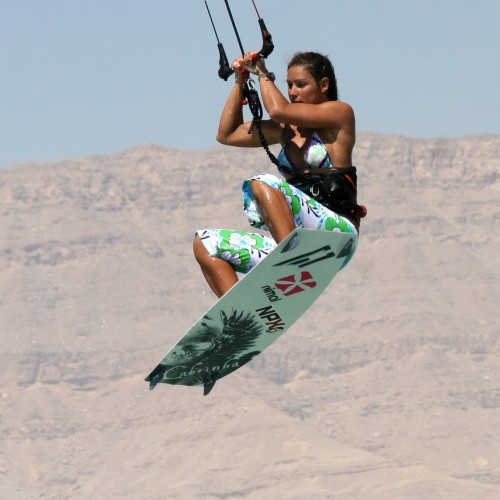
Unhooked Jump
Technique / Intermediate
Introduction
From experience with many kiters and guests we are loath to admit that the box of gold under the rainbow to many is the sacred art of unhooking and all that comes with it. How many times have we read a pre clinic questionnaire where the two answers to the questions 1. Brief self-assessment and 2. Aims of course are 1. Happily riding upwind, jumping some of the time and 2. F16 (you know who you are).
Now you can’t keep a good man or woman down and a positive, optimistic view is often what keeps us going and certainly livens up a dull moment. So realistically on the unhooked side of life once you can pop and raley you might just want to start jumping. Anyone with their sights set on the dangle pass will need an unhooked jump and it certainly is the precursor for many other moves.
As with all things unhooked you need to be sensible. So no old-fashioned suicide leashes, lots of space for you and everyone around you and don’t forget the importance of trimming the bar down towards you. If you’re lost try having a read of our article in issue 6.
The Vital Ingredients
Jumping unhooked requires all the same core skills as jumping hooked in. In a way it’s a great method of finding out your strengths and weaknesses and to some degree it may improve your hooked in aerial adventures.
The most obvious and main difference is the take off. Without the ability to sheet the bar out as you approach there is a possibility that you’ll get overpowered before you have the chance to settle into a nice strong edge against the pull of the kite. To make matters worse, if in anticipation of this overpowered-ness, you trim your kite just a bit too much you’ll end up with no power and not a hope in a hot place of flying.
1. The Take Off
Looking at Pic A. without your glasses you could be forgiven for thinking that Karine is preparing for a hooked in jump, it’s just that she’s unhooked. Any moment now she’ll be getting pinged skyward.
Her head is looking over her front shoulder, encouraging her body to turn upwind, and is not cheekily looking at the kite to see where it is (which would result in her coming upright over the board and loosing her edge!).
She has sent the kite back hard from about 11 o’clock with her hands centred on the bar. With the kite moving quickly she will not have to resist as long against the pull of the kite, and will be rewarded with an earlier take off, which in turn will not let the kite swing too far behind her.
Her shoulders and hips are twisted upwind to carve the board upwind and away from the kite. With the board turned well into wind Karine has more chance of holding her edge. She is battling with all her strength to keep her elbows down and in towards her hips. Once the arms straighten the shoulders will be pulled forward and her edge will be history.
Karine has dropped her derriere close to the water to better resist the forces in the kite. At the same time her front leg is only slightly flexed, and together this puts her board on a very healthy looking edge. Karine is pushing her back leg away, which keeps her board in between her and the kite and stops her getting pulled up onto the board and off her edge.
2. In Flight Entertainment
Pic B. Once in the air Karine’s aims are the same as per jump. She needs to get the kite back above her and get herself balanced after the initial stretch of take off.
Her bar is now parallel with the water, the old hands to hips routine. However when you are unhooked, without the luxury of a chicken loop, just pulling down on both hands in the centre of the bar will not have much effect on a kite flying backwards. As you get pulled up you will need to make a concerted effort to actually steer the kite forward by pulling hard on the front hand, to counter the fact that you’re hanging from both hands.
Karine has pulled herself up to the bar and brought her knees up, thus making her small and balanced. From this position it is much easier to control and steer the kite than if she was dangling with straight arms and legs. You don’t need to be super strong to do this as will become clearer in the sequence. Suffice to say Karine has adopted this position once the kite has stopped lifting her, so she can almost pull the bar down to her.
3. The Landing
Pic C. Yet again this could be from a hooked in shot. Karine is focused on where she wants to land with her head and eyes. She has dived the kite down and forward by pulling hard on her front hand, which will help get her in position for the landing and will give her the speed to carry on once she touches down. She has dropped her legs in anticipation of the landing and has turned her board downwind for a tail first reception, which will keep her speed up and prevent her from bouncing on against an edge. Picture perfect.
Following Sequence 1
- Pic 1. With the kite around 11 o’clock and with good board speed Karine has pushed the nose of the board off the wind, extended her front leg and let the kite pull her up over the board. Now that the board is pointing at the kite there should be some slack in the lines so that Karine can unhook.
- Pic 2. Karine pushes the bar down so that her chicken loop (without donkey dick) can fall free. She doesn’t look down, as this would bring her shoulders forward.
- Pic 3. Karine now sends the kite back and drops her weight back over her trailing foot, pushing the board away from her.
- Pic 4. She twists her shoulders and hips upwind and drops her body weight upwind of the board, resisting the pull of the kite by pushing back with her feet. Her front leg is still extended and she tries to keep her elbows in near her waist.
- Pic 5. As Karine’s arms get pulled up its time to get airborne or she’ll just be pulled over the board.
- Pic 6. Karine explodes up off her back leg, pushing her heel hard against the edge for that last bit of resistance.
- Pic 7. The kite wins and Karine is plucked into the air. As she rises Karine pulls down hard on her front hand to redirect the kite and stop any unwanted pendulum activity.
Following Sequence 2
- Pic 1. As we left her, Karine is concentrating on redirecting the kite with her front hand. So important and requiring much more effort than you would believe.
- Pic 2. Still on her way up Karine starts to lift her knees whilst steering the kite back above her.
- Pic 3. Karine now has the board in front of her and she’ll start to feel more balanced and more in control.
- Pic 4. As she approaches the apex of her jump the kite is not lifting as much so Karine can start to pull down on the bar.
- Pics 5 & 6. At the very top of her jump. Karine has now managed to pull the bar down to her and from here she can focus on her landing.
- Pics 7 & 8. As Karine starts to descend she tries to hold her position and keep the kite flying forward.
- Pics 9 & 10. Karine drops her legs and starts to hang off/pull on her front hand to get the kite diving down.
- Pic 11. Just before landing Karine points her board downwind and drops her back leg, whilst still diving the kite down with her front arm. Yet again you’ll need to put a lot of effort into the dive, as the kite will not respond like you’re used to.
- Pic 12. A perfect landing off the wind. Karine can now gather her thoughts, hook back in, carve the board up and across the wind and fly the kite.
Common Problems
1. The first most common problem is getting pulled off your edge during the take off. If you look at the kite, it twists your body back across the wind and results in you being lifted over the board and loosing your edge.
Try to get really low and keep your elbows tucked in. This will be easier if you lean your weight back as your bear away to unhook, as then when you suddenly carve upwind your front leg will be straight and your weight will be low. Once you feel your arms start to extend pop up, as this is definitely the last moment possible to salvage your jump.
2. Redirecting your kite when you take off and diving it as you land is much harder hanging from a bar with your hands in the middle. As a result you may find that on take off it’s very hard to get the kite back above you, so you pendulum and drop. If you hold your edge and jump before you get pulled forward this will help.
Try using both hands to steer. So if you want to pull on your front hand, push away with your back hand. The result is a turning of the wrists, which will make life considerably more pleasant.
Keystones
- Bear away to unhook
- Drop you weight back
- Bum low
- Arms bent
- Pull front, push back
This technique article was in Issue 17 of IKSURFMAG.
Related
By Christian and Karine
Christian and Karine have been working together as a coaching team, running improver to advanced kitesurfing clinics since 2003.





